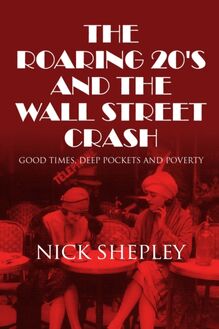-
 Univers
Univers
-
 Ebooks
Ebooks
-
 Livres audio
Livres audio
-
 Presse
Presse
-
 Podcasts
Podcasts
-
 BD
BD
-
 Documents
Documents
-
- Cours
- Révisions
- Ressources pédagogiques
- Sciences de l’éducation
- Manuels scolaires
- Langues
- Travaux de classe
- Annales de BEP
- Etudes supérieures
- Maternelle et primaire
- Fiches de lecture
- Orientation scolaire
- Méthodologie
- Corrigés de devoir
- Annales d’examens et concours
- Annales du bac
- Annales du brevet
- Rapports de stage
La lecture à portée de main
Vous pourrez modifier la taille du texte de cet ouvrage
Découvre YouScribe en t'inscrivant gratuitement
Je m'inscrisDécouvre YouScribe en t'inscrivant gratuitement
Je m'inscrisEn savoir plus
Vous pourrez modifier la taille du texte de cet ouvrage
En savoir plus

Description
Informations
| Publié par | Andrews UK |
| Date de parution | 07 décembre 2015 |
| Nombre de lectures | 0 |
| EAN13 | 9781849899475 |
| Langue | English |
Informations légales : prix de location à la page 0,0150€. Cette information est donnée uniquement à titre indicatif conformément à la législation en vigueur.
Extrait
Title Page
THE ROARING 20’S AND THE WALL STREET CRASH
Good Times, Deep Pockets and Poverty
By
Nick Shepley
Publisher Information
The Roaring 20’s and the Wall Street Crash
Published in 2011 by
Andrews UK Limited
www.andrewsuk.com
This book is sold subject to the condition that it shall not, by way of trade or otherwise, be lent, resold, hired out or otherwise circulated without the publisher’s prior written consent in any form of binding or cover other than that in which it is published, and without a similar condition being imposed on the subsequent purchaser.
The characters and situations in this book are entirely imaginary and bear no relation to any real person or actual happening.
Copyright © Nick Shepley
The right of Nick Shepley to be identified as author of this book has been asserted in accordance with section 77 and 78 of the Copyrights Designs and Patents Act 1988
Introduction
In this volume I intend to look closely at the causes of the Wall Street Crash and the Great Depression. Other issues about the USA in the 1920s will be addressed in other titles, such as the plight of Black Americans, the Red Scare, the Jazz Age etc. This title will be particularly useful for those of us (me included sometimes) who find the reasons for the collapse of the US economy in 1929 quite confusing.
In 1929 Stock Market evangelist John J. Raskob wrote in his book ‘Everybody Ought to Be Rich’:
“If a man saves $15 a week, and invests in good common stocks, and allows the dividends and rights to accumulate, at the end of twenty years he will have at least $80,000 and an income from investments of around $400 a month. He will be rich. And because income can do that, I am firm in my belief that anyone not only can be rich, but ought to be rich.”
Raskob, the man who built the Empire State Building, was not just writing a self-help book the likes of which we see filling the shelves in high street book shops today, he was making a profound ideological statement about America in the 1920s. He believed, as did countless others, that there should be no limitations to the wealth a person can enjoy, the old notion that one’s earnings are limited to the amount of hard work one does was, in Raskob’s view, redundant. The stock market had presented America with what seemed to have been promised by the constitution and the founding fathers, the right to unlimited prosperity.
In this book we will examine why this turned out to be a fallacy and we will look at the consequences of the fantasy of American capitalism in the 1920s and 1930s.
Firstly though, a quick bit of Wall Street Crash myth busting. It’s common for students of US history to look at the Wall Street Crash as the sole cause of the Great Depression, a kind of ‘epic mistake’ that blew apart an otherwise prosperous country. This is not just an oversimplification of the crash but a profound misunderstanding. Healthy economies always suffer the shock of events like stock market crashes, but normally they have systems in place to weather the subsequent economic storms. It is economies that have allowed long term problems to build up that are crushed when the seemingly inevitable economic crisis occurs. In America’s case we have to remember three things. Firstly, America did have serious long term crises accumulating, casting a long shadow over it’s future economic health, secondly that when the Wall Street Crash happened, that it was rather like America’s economy experiencing a heart attack. The third point to consider is that following the crash, the depression was made far more serious because of the wrong kind of economic medicine that US Presidents both Republican and Democrat administered. So in order to understand the critical imbalances that were building up on the eve of the crash, we must understand the decade that preceded it.
America in the 1920s
America’s involvement in World War One, though mercifully brief, had come at a high price in lives lost on the Western Front.
-
 Univers
Univers
-
 Ebooks
Ebooks
-
 Livres audio
Livres audio
-
 Presse
Presse
-
 Podcasts
Podcasts
-
 BD
BD
-
 Documents
Documents
-
Jeunesse
-
Littérature
-
Ressources professionnelles
-
Santé et bien-être
-
Savoirs
-
Education
-
Loisirs et hobbies
-
Art, musique et cinéma
-
Actualité et débat de société
-
Jeunesse
-
Littérature
-
Ressources professionnelles
-
Santé et bien-être
-
Savoirs
-
Education
-
Loisirs et hobbies
-
Art, musique et cinéma
-
Actualité et débat de société
-
Actualités
-
Lifestyle
-
Presse jeunesse
-
Presse professionnelle
-
Pratique
-
Presse sportive
-
Presse internationale
-
Culture & Médias
-
Action et Aventures
-
Science-fiction et Fantasy
-
Société
-
Jeunesse
-
Littérature
-
Ressources professionnelles
-
Santé et bien-être
-
Savoirs
-
Education
-
Loisirs et hobbies
-
Art, musique et cinéma
-
Actualité et débat de société
- Cours
- Révisions
- Ressources pédagogiques
- Sciences de l’éducation
- Manuels scolaires
- Langues
- Travaux de classe
- Annales de BEP
- Etudes supérieures
- Maternelle et primaire
- Fiches de lecture
- Orientation scolaire
- Méthodologie
- Corrigés de devoir
- Annales d’examens et concours
- Annales du bac
- Annales du brevet
- Rapports de stage




















